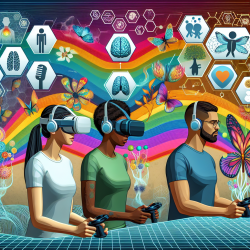Introduction
Epidermolysis Bullosa (EB) is a rare genetic disorder characterized by skin fragility and other symptoms. The condition significantly impacts the psychosocial well-being of children and their families. As a practitioner, understanding and implementing evidence-based guidelines can improve outcomes for children with EB.
Understanding the Psychosocial Impact
According to the research article "Psychosocial recommendations for the care of children and adults with epidermolysis bullosa and their family: evidence-based guidelines," EB affects various aspects of life, including quality of life (QoL), coping mechanisms, family dynamics, and access to healthcare professionals. The study highlights the need for multidisciplinary support to enhance psychosocial well-being.
Key Recommendations for Practitioners
- Multidisciplinary Support: Collaborate with a team of healthcare professionals to provide comprehensive care. This includes psychological support, social participation, and educational interventions to prevent isolation.
- Focus on Quality of Life: Implement strategies that enhance QoL by addressing physical symptoms, promoting social activities, and reducing embarrassment associated with the condition.
- Encourage Coping Mechanisms: Support children in developing coping strategies that foster a sense of control over their condition. This can include self-management techniques and building social skills.
- Family Involvement: Engage families in the care process to strengthen family dynamics and prevent emotional breakdowns. Provide education and resources to empower families in managing EB.
- Research and Education: Encourage further research to explore interventions that improve psychosocial outcomes. Stay informed about the latest findings and integrate them into practice.
Encouraging Further Research
While the guidelines provide a solid foundation, there is a need for more research to identify effective interventions. Practitioners are encouraged to contribute to this growing body of knowledge by participating in studies and sharing their experiences.
Conclusion
Implementing these evidence-based guidelines can significantly improve the psychosocial well-being of children with EB and their families. By fostering a supportive environment and promoting multidisciplinary collaboration, practitioners can create positive outcomes for their patients.
To read the original research paper, please follow this link: Psychosocial recommendations for the care of children and adults with epidermolysis bullosa and their family: evidence based guidelines










